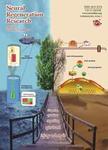Time-lapse changes of in vivo injured neuronal substructures in the central nervous system after low energy two-photon nanosurgery
Time-lapse changes of in vivo injured neuronal substructures in the central nervous system after low energy two-photon nanosurgery作者机构:Guangdong-Hong Kong-Macao Institute of CNS Regeneration Jinan University Guangzhou Guangdong Province China School of Biomedical Sciences Division of Anatomy The University of Hong Kong Pokfulam Hong Kong Special Administrative Region China Guangdong Engineering Research Center of Stem Cell Storage and Clinical Application Saliai Stem Cell Science and Technology Guangzhou Guangdong Province China State Key Laboratory of Brain and Cognitive Sciences The University of Hong Kong Pokfulam Hong Kong Special Administrative Region China
出 版 物:《Neural Regeneration Research》 (中国神经再生研究(英文版))
年 卷 期:2017年第12卷第5期
页 面:751-756页
核心收录:
学科分类:0710[理学-生物学] 1002[医学-临床医学] 1001[医学-基础医学(可授医学、理学学位)] 100204[医学-神经病学] 10[医学]
基 金:supported by National Basic Research Program of China(973 Program) No.20114002002,and 2014CB542205 by Hong Kong Health and Medical Research Fund,No.02132826
主 题:nerve regeneration dendrite dendritic spine axon spinal cord two-photon nanosurgery single-synapse resolution neural regeneration
摘 要:There is currently very little research regarding the dynamics of the subcellular degenerative events that occur in the central nervous system in response to injury. To date, multi-photon excitation has been primarily used for imaging applications; however, it has been recently used to selectively disrupt neural structures in living animals. However, understanding the complicated processes and the essential underlying molecular pathways involved in these dynamic events is necessary for studying the underlying process that promotes neuronal regeneration. In this study, we introduced a novel method allowing in vivo use of low energy(less than 30 m W) two-photon nanosurgery to selectively disrupt individual dendrites, axons, and dendritic spines in the murine brain and spinal cord to accurately monitor the time-lapse changes in the injured neuronal structures. Individual axons, dendrites, and dendritic spines in the brain and spinal cord were successfully ablated and in vivo imaging revealed the time-lapse alterations in these structures in response to the two-photon nanosurgery induced lesion. The energy(less than 30 m W) used in this study was very low and caused no observable additional damage in the neuronal sub-structures that occur frequently, especially in dendritic spines, with current commonly used methods using high energy levels. In addition, our approach includes the option of monitoring the time-varying dynamics to control the degree of lesion. The method presented here may be used to provide new insight into the growth of axons and dendrites in response to acute injury.



